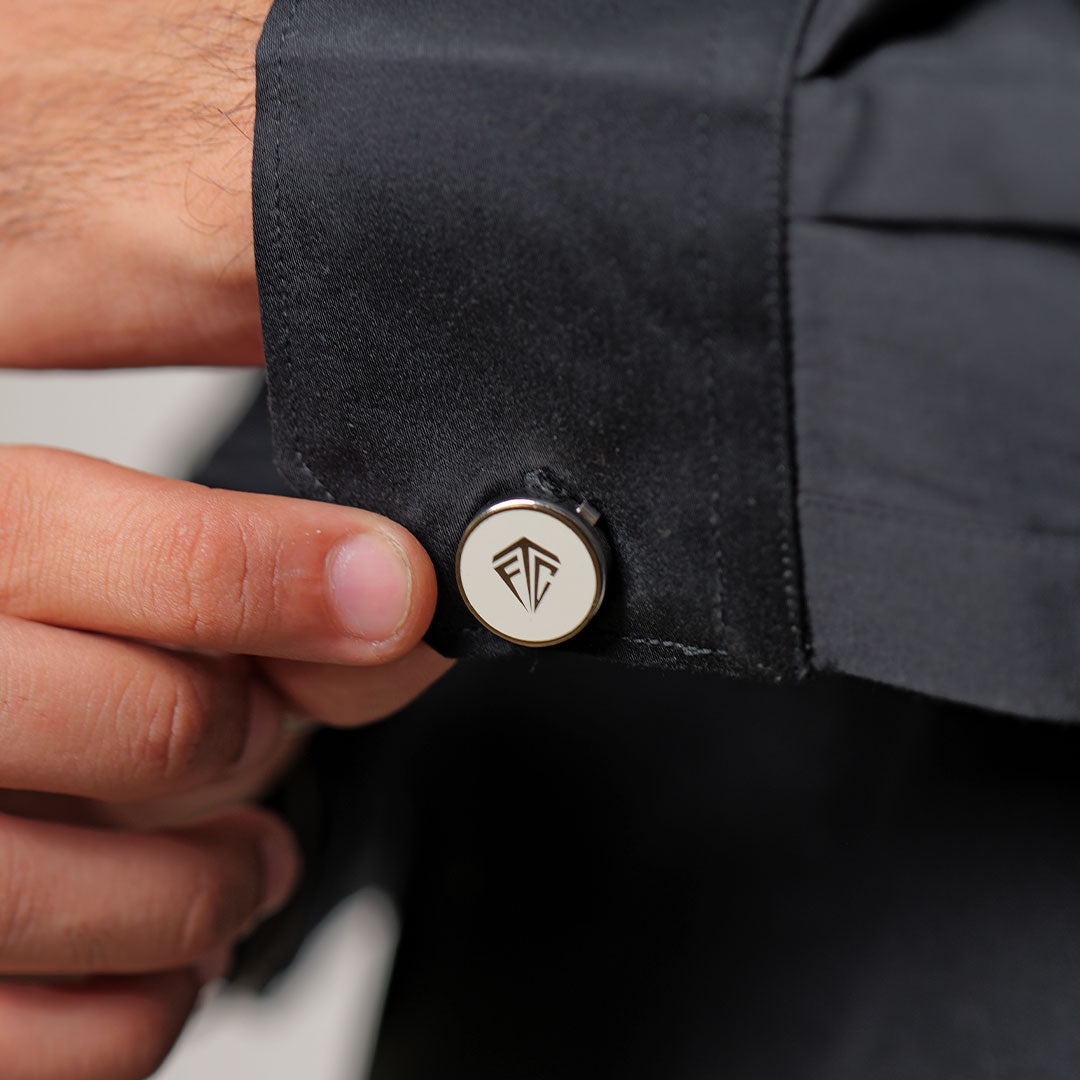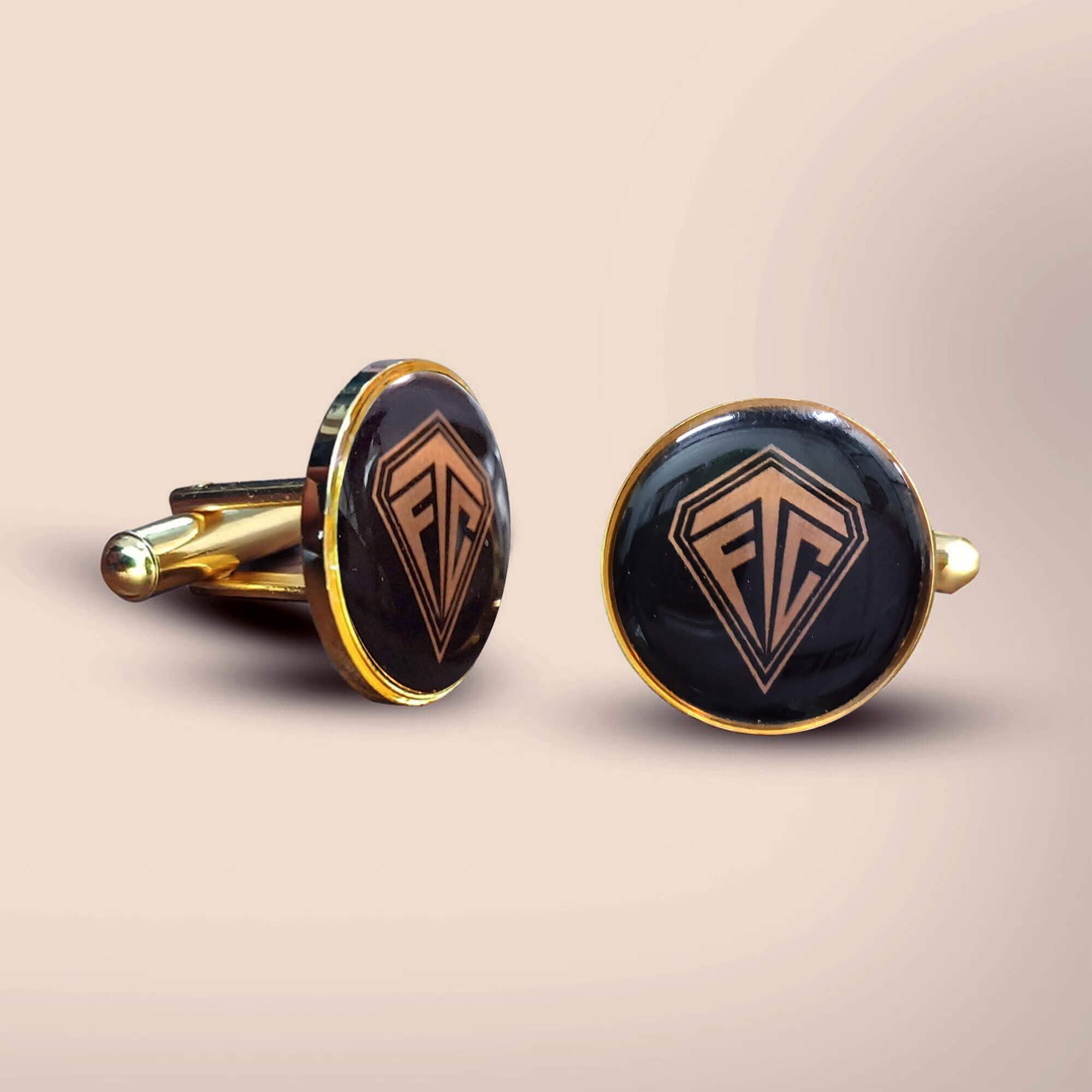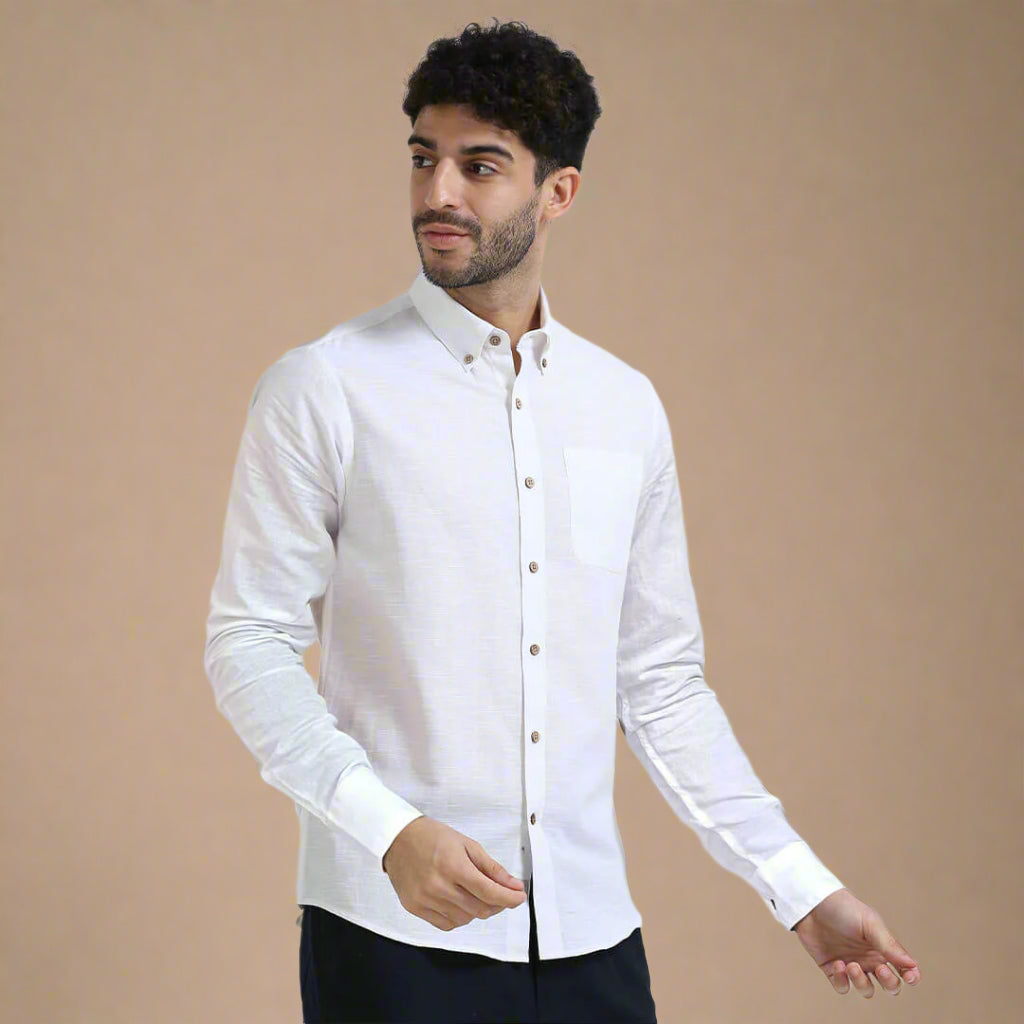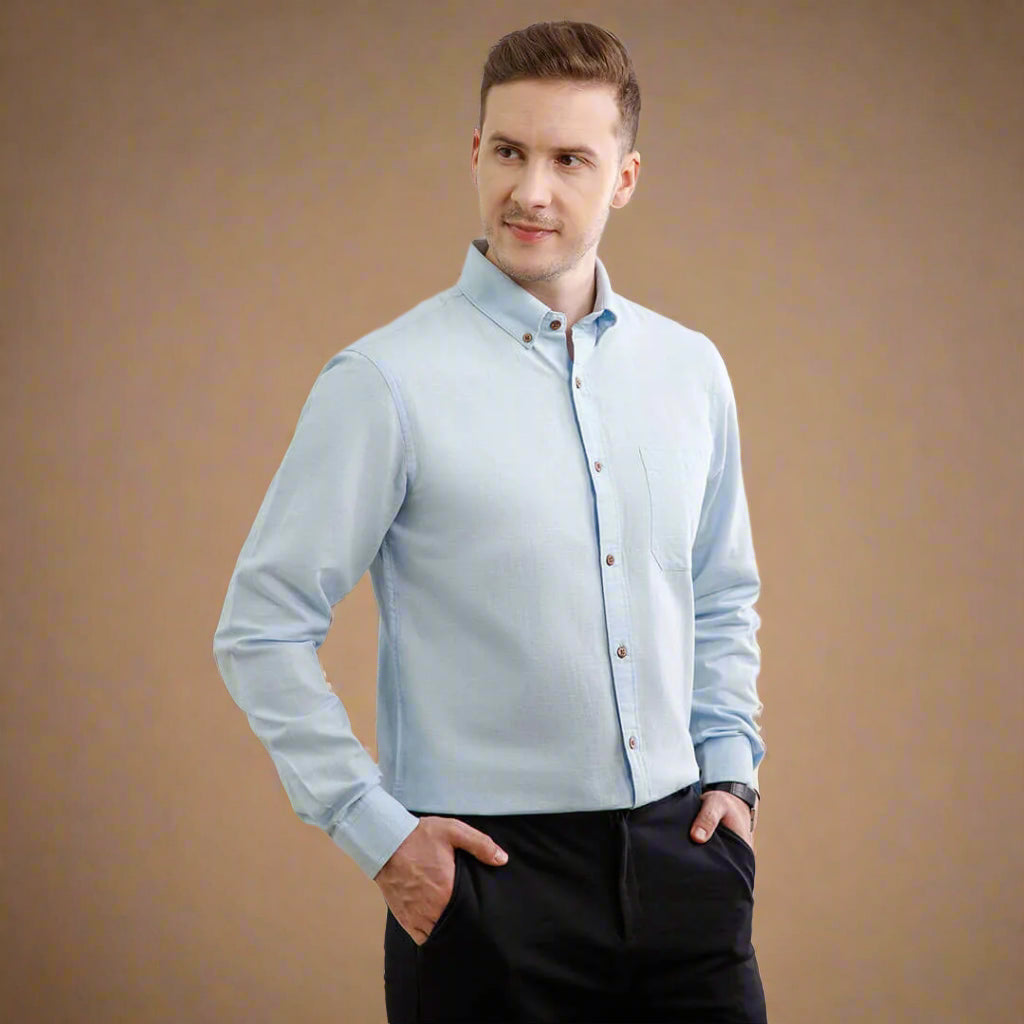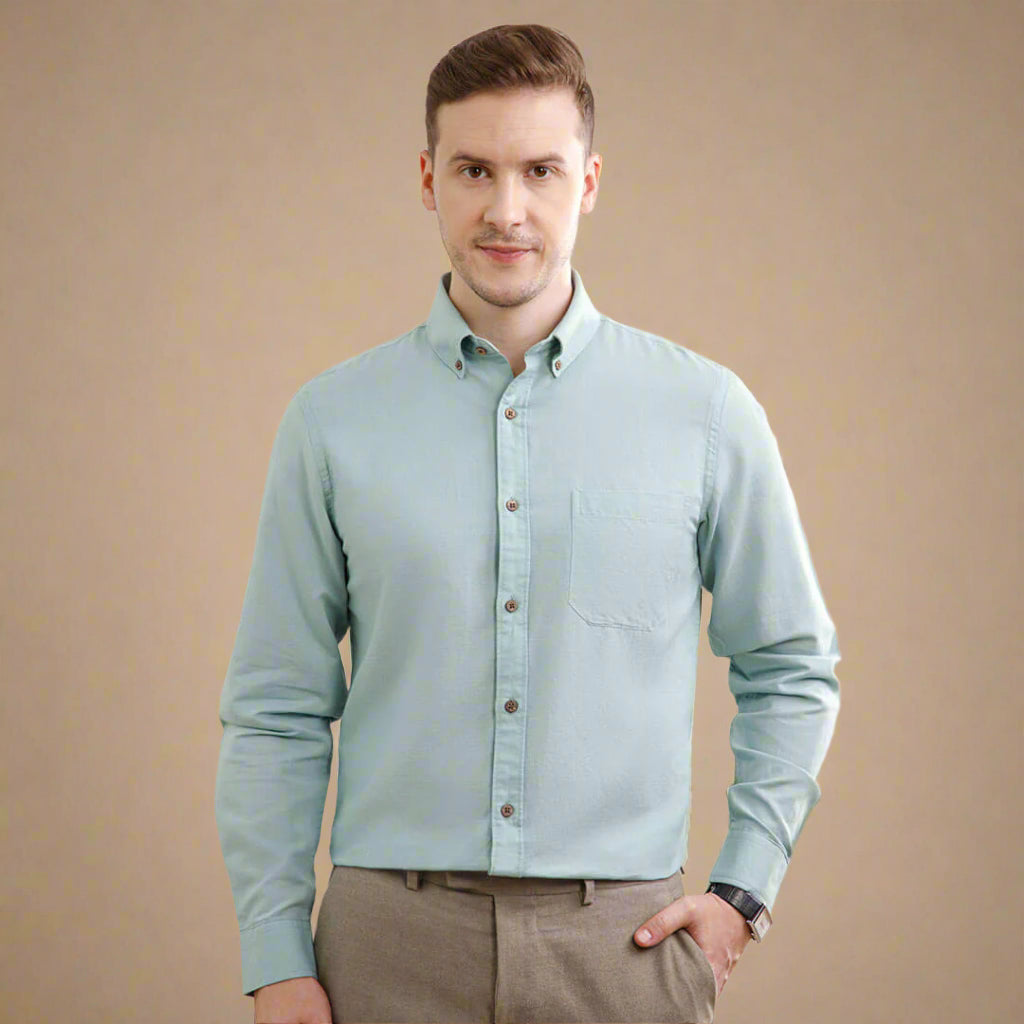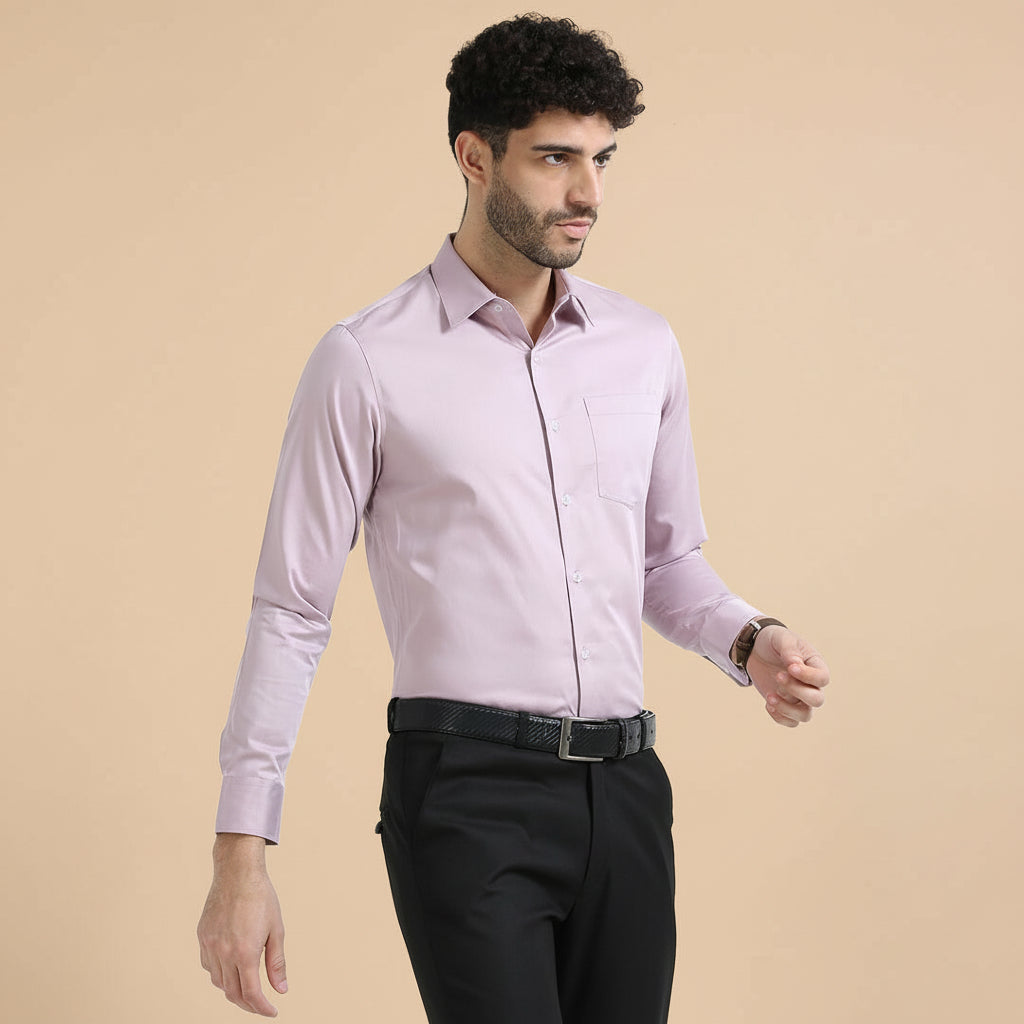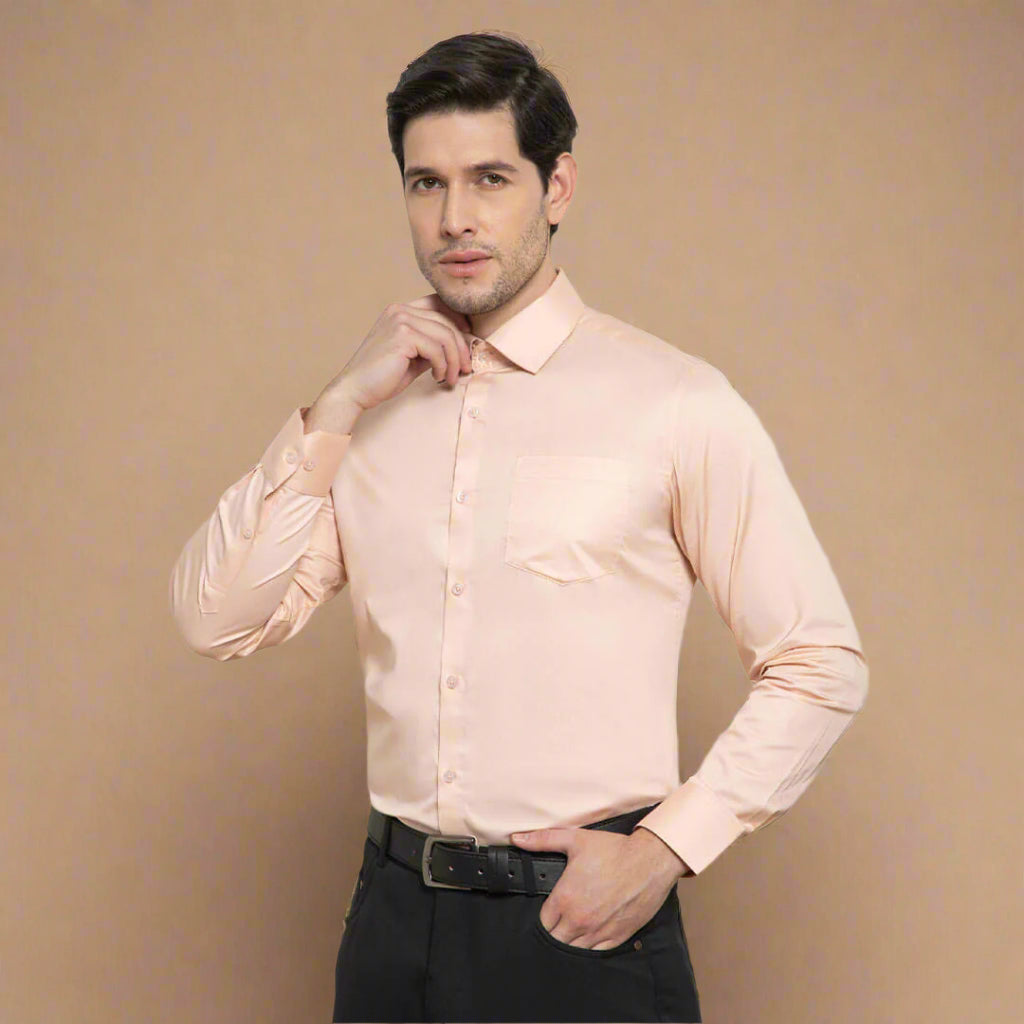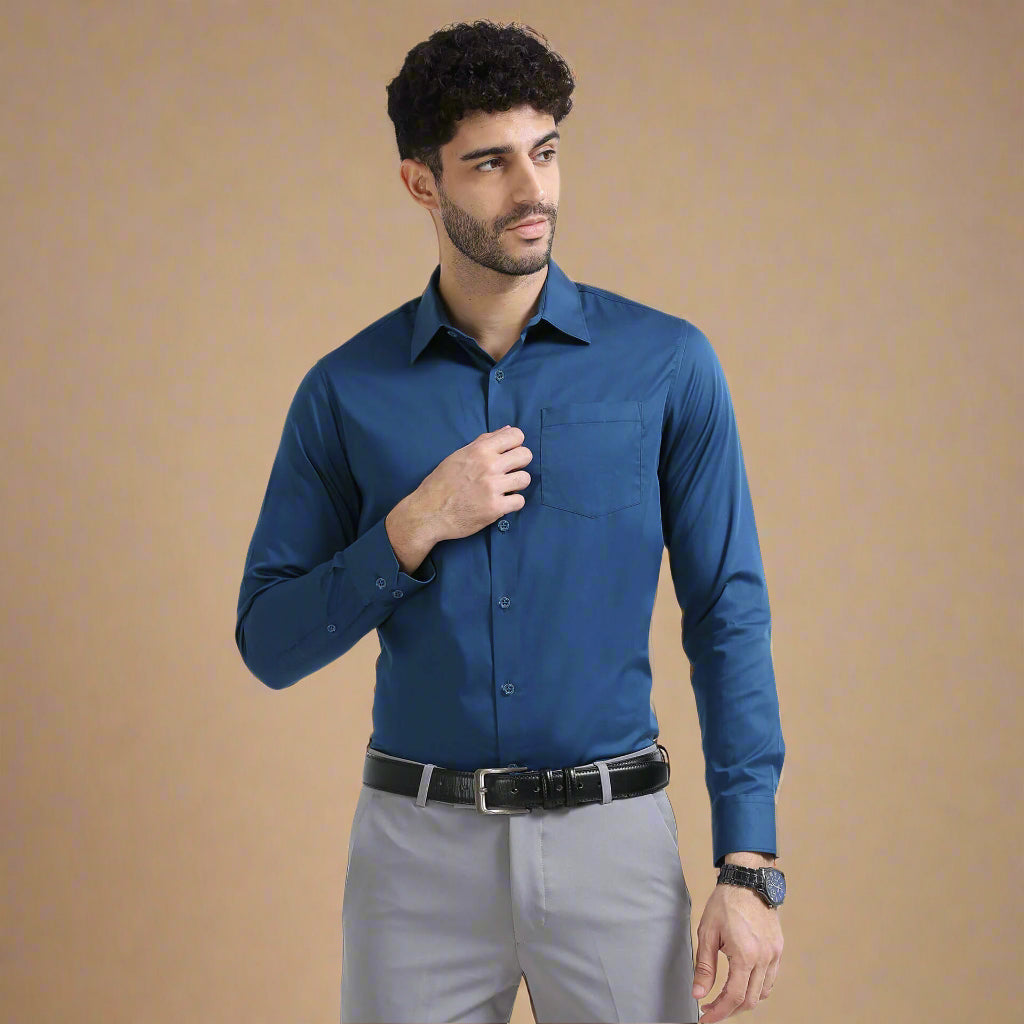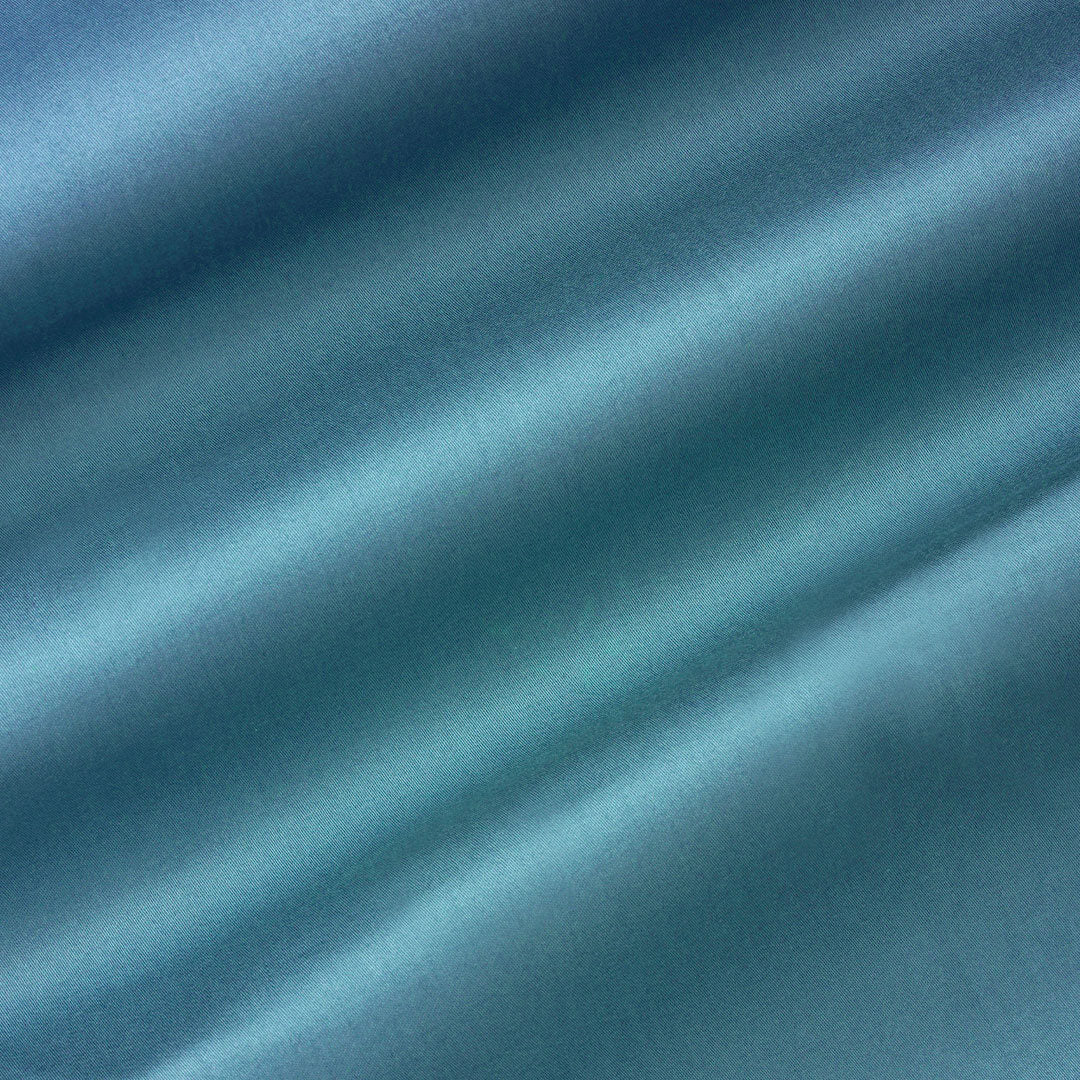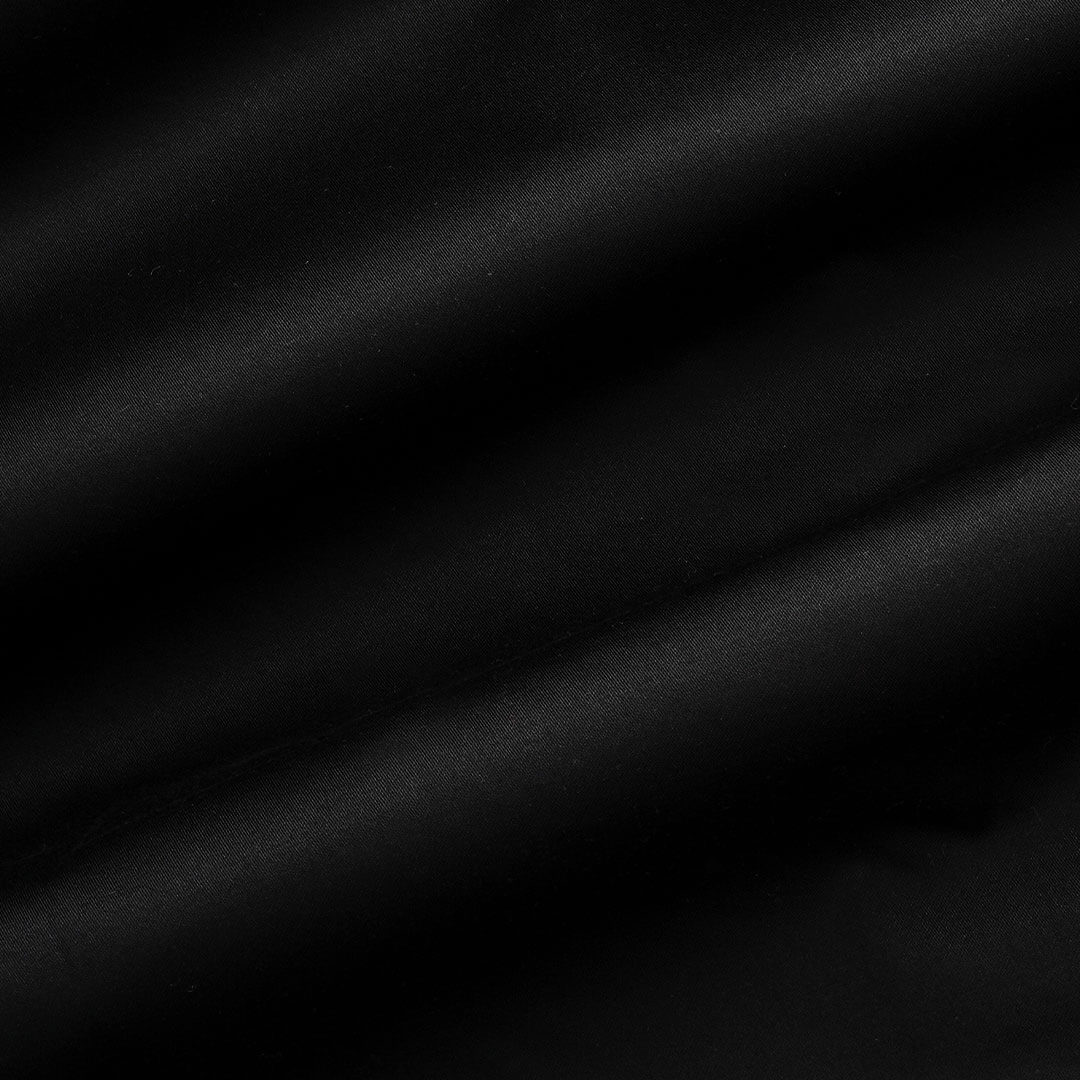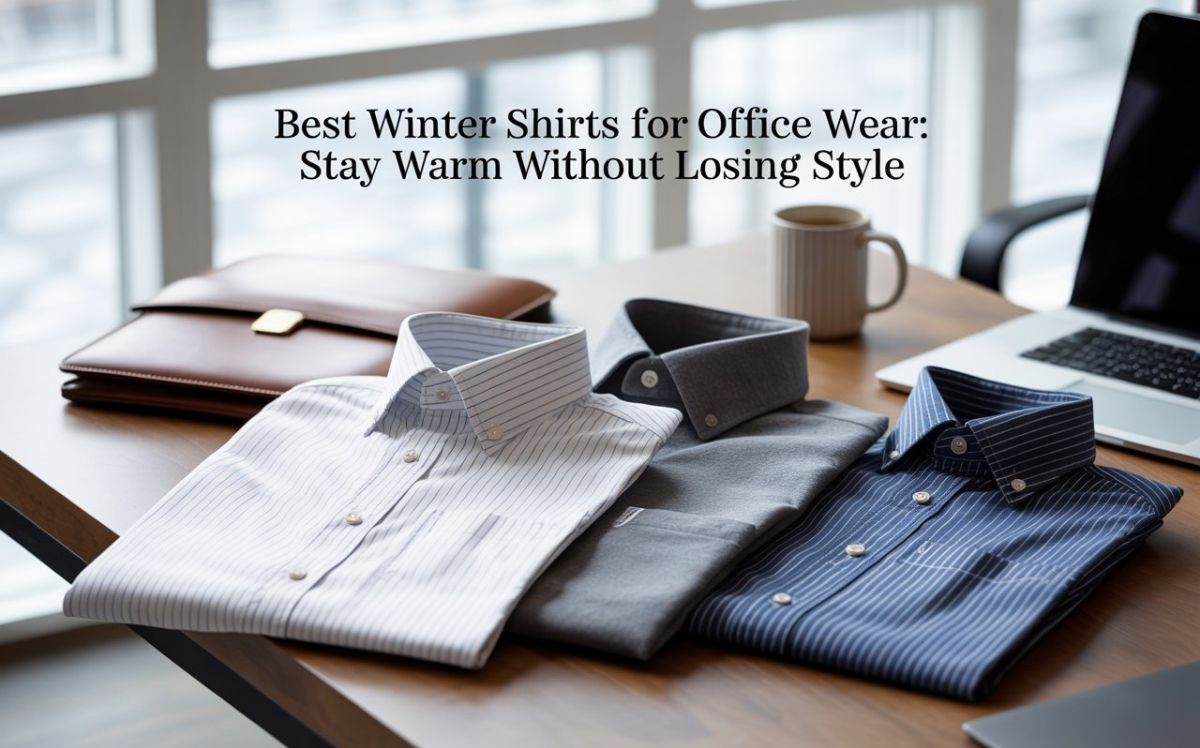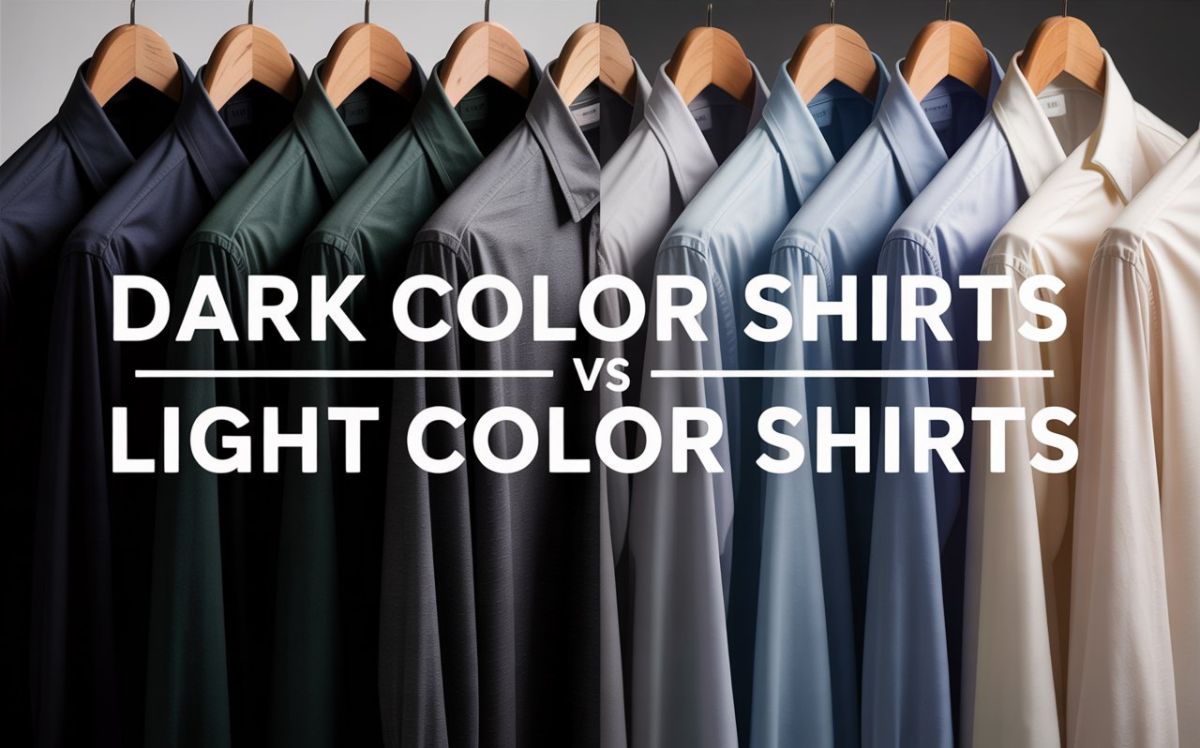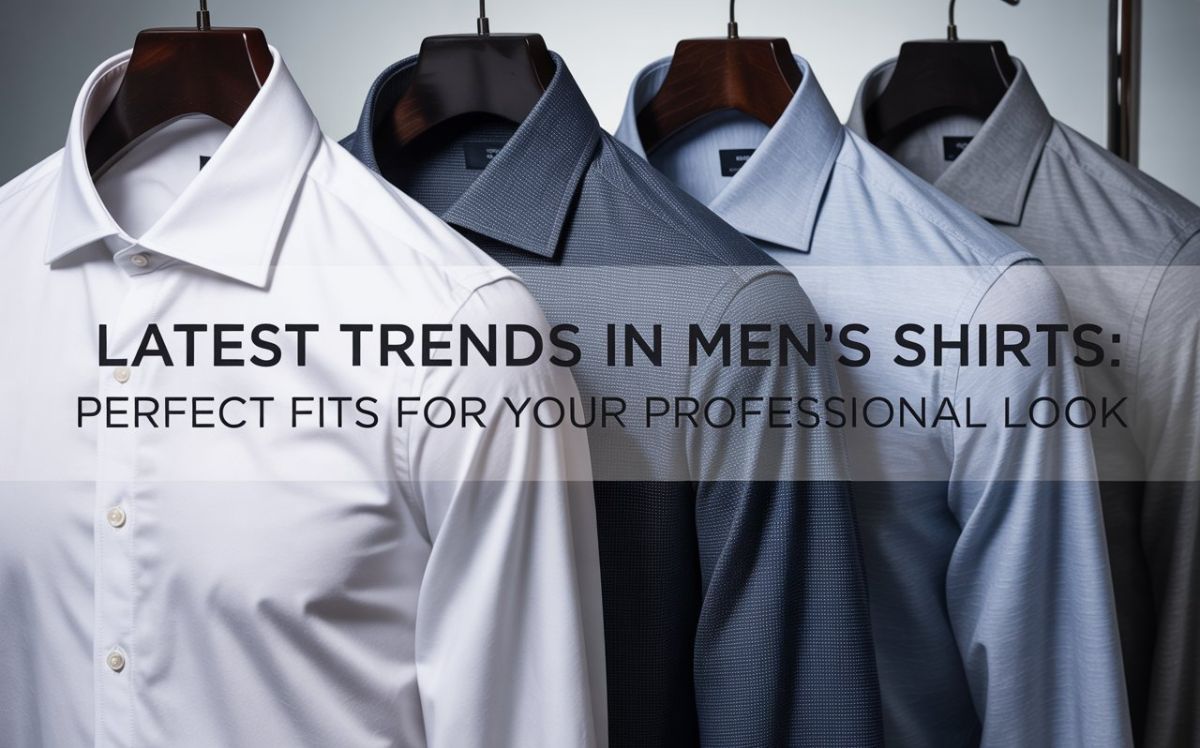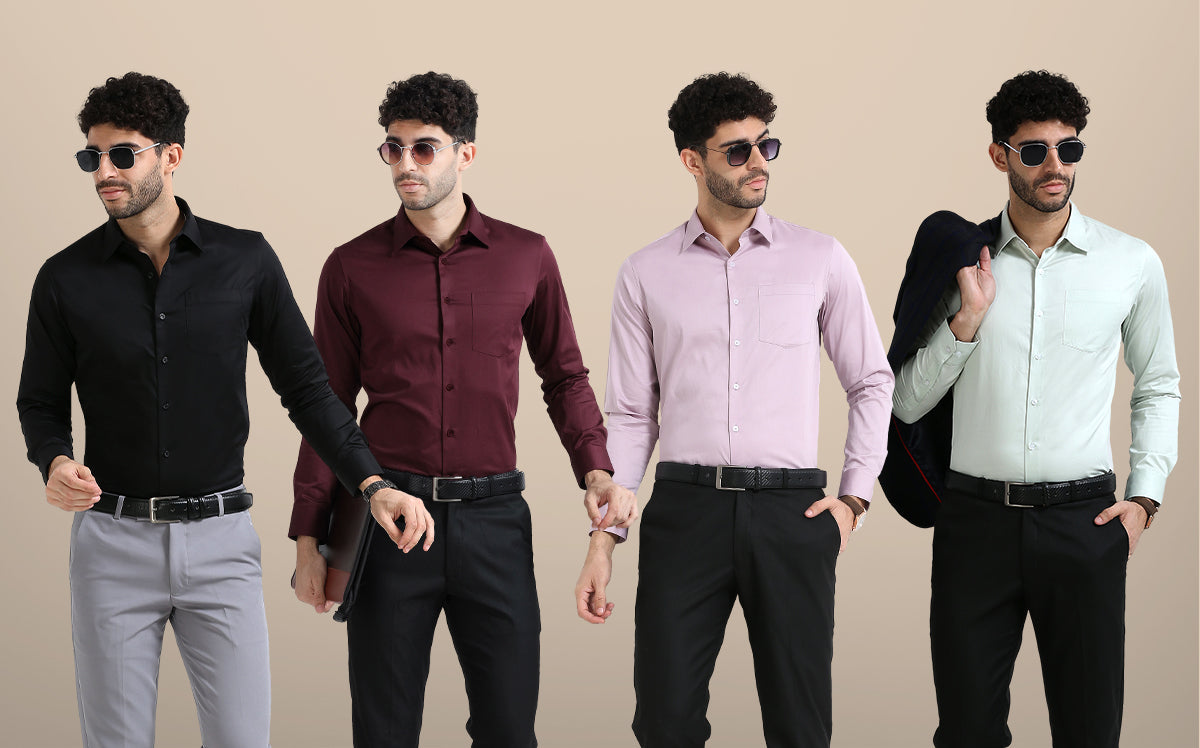How to Find Your Ideal Shirt Size: The Perfect Fit
Shirts can be tricky to get right, but they are crucial for feeling and looking great. It can lead to increased comfort and confidence when wearing a well-groome shirt. Knowing how to determine your ideal shirt size is important when shopping for casual or formal attire.
How to select the appropriate shirt sizing, including body measurements, size charts, and more, will be covered in this handy guide.
Body Measurements
When you want to determine the size of your shirt, you must first measure your body. Get help from someone who can help you with a flexible measuring tape. The crucial measurements are below.
- Neck Circumference: The neck circumference measurement involves standing up and wrapping tape around the base of one's neck above the collarbone. Use tape flat on your skin to maintain a snug but non-tight fit. Find the nearest centimeter or half an inch.

- Chest/Bust Circumference: The measurement involves wrapping measuring tape around the entire chest bust area, keeping the tape from the floor. Hold the tape gently and breathe.

- Waist Circumference: Locate the slender place on your waist, usually above or around your hips. Place tape around the area, keeping it parallel to the floor. Keep the tape in place but not too tightly.

- Sleeve Length: To muscle your sleeve length, bend your arm at a 90° angle, placing your hand on your hip. Considering your neck height, note your measurement,e a line at the point where your elbows are bent, and record where you want your sleeves to stop. This normally consists of measuring as far as the end of the bone.

Size Charts
Size charts suggest sizes for your bodily measurements, whereas every brand has its size standards. If using one, identify, among others, the section that fits you with your body form and gender. Usually, these are separate, female- and male-oriented ones, created with different body shapes, usually for athletic or plus-size people in mind.
Just as you do, go through the rows and columns to discover the range that your quarter and half inseams correspond. Check on the row that smartly fits the measurements you have or is comfortably in the measurements pre-set.

Nevertheless, the size charts could be treated as a standard rather than a unique norm for the choices. Size can vary from product to product, even though they are all produced by the same fashion brand. Different fabrics, layouts, or design characteristics may cause differences. If your measurements indicate conflicting sizes, pick the larger size or consult a specialist for advice.

Lastly, the real proof is whether you walk out of the store with it on your body and feel good. Don't pay attention to your size, buy many pieces, and don't be afraid to try them. Each body type is individual and unique. Size charts make your chances of finding the right size out of the starting block a little bit easier, but they are still not nearly enough since the final fitting is integral.
Trying On Shirts
To begin with, size charts can be a good reference; however, it is the best practice to leave the comfort of the house and visit the mall to be able to establish the best fit. Here are some tips for ensuring the perfect fit when trying on Giza Cotton Shirts:

- Collar and Neck: The collar length must be such that it fits perfectly around your neck. It must not feel too tight or too loose. The collar must sufficiently be loose where to place two fingers in between it and your neck.
- Shoulder Seams: By putting the shoulder seams of the shirt along the shoulder edge, you will blend in with the garment. Should they touch your upper arm or float from your shoulders, you are probably wearing either a large or small shirt.
- Chest and Torso: The use of fabric across your neck and torso should respond debonairly, without tearing or stretching. It is necessary to have some space remaining for running around and morning stretch, but not the bags.
- Sleeve Length: The length of sleeves is targeted to be appropriate for reaching the bone of the wrist, which is usually very far from the hands. It is essential that you do not have any wrinkles or bunches of fabric and that the golden cannonball sheath dress fits your biceps and forearms well.
- Shirt Length: The correct length for the shirt is dependent upon your build preference and the purpose of the shirt. Another example is a shirt that, seen casually, can be worn outside, and it ends up below the waistline, while a formal shirts that is supposed to be tucked in is designed accordingly.
Fit Considerations
If you take care of shirts, we require you to consider what size and style you want when you buy a shirt. Different shirt styles may have varying fit preferences:
- Casual Shirts: Informal tops like t-shirts, polos, and casual button-downs can be a little loose to your preferences and aim for comfort and relaxation. The fit should be neither too tight nor too loose so that the fabric's bunching up or its tendency to be tight does not hinder you during movement.
- Dress Shirts: The dress shirts mostly utilize a more fitted manner in the neckline and the arms, accentuated by a sharp cut at the waistline. The garments should be snug and supple so as not to prevent action or cause user discomfort.
- Slim-Fit Shirts: Shirts that are cut slimmer occupy less space on the chest, waist, and sleeves, adding a slimmer appearance to the body. These sloppy shirts should be of such quality so they would fit snugly, but not tight, not constricted too much.
- Athletic or Muscular Builds: Being of developed athletic or muscular build, you may need to rely on a larger size or check out shirts that are intended for an audience with broader shoulders and chests. Extra space in the upper body, including the biceps and chest area, while other sections are designed to fit close is the design feature shared by all these dress shirts.
Fabric and Fit
Fit-wise, the issue is as important as thinking about the fabric. Different fabrics have different types of stretch and fit, which can influence how the shirt hangs and moves with your body.
- Cotton: Cotton is a popular and good with many shirts available on the market. It can range from sneakers and leggings made from light, airy, breathable fabrics to heavier and more structured ones, heavier ones based on the weave and thread count. Relaxing and comfort-fitting shirts are typical for widely spread cotton shirts.
- Linen: Linen Shirts is a light and breathable textile that has the possibility of a slightly looser and less appropriate fit. One of the main purposes is to fit casual and summer hemp shirts.
- Silk: Silk is a refined silk fabric that spreads with ease. The yarn of silk shirts can reduce the edges, making them a good fit on the body, too.
- Polyester and Blends: Spandex and synthetic fabrics are able to provide some stretch and moisture-wicking attributes. This way, it can give both a more personalized and flexible shape with the possibility of movement and flexibility.
- Wool and Wool Blends: Wool and wool blends are mainly for dressers and structured casual shirts. These textiles generally ensure a custom and sharp fit, for example, for formal engagements and business deals.
Caring for Your Shirts

Lastly, careful and prolonged maintenance can also provide clues towards the longevity and perfect fitting of your uniforms. Here are some tips for caring for your shirts:
- Follow Washing Instructions: An ideal way of extending your garment's life is to always read and carefully follow the care instructions as shown on the garment label or tag. Various fabrics may need varying washing temperatures, different kinds of detergents or certain drying processes.
- Avoid Shrinkage: To avoid the shrinkage from happening, this could alter the fit of the shirts you bought; then don't put them in hot water while you wash them or use high heat while drying them; do so unless the garment instructions allow it.
- Iron or Steam: Keep in mind ironing or pressing your shirts can help redistribute their shape and neaten their visual aspect after the shirt has been washed or worn. See to it that the right heat settings are being followed for different kinds of fabrics.
- Store Properly: Linen up your shirts by folding or hanging them appropriately so you are assured that alterations caused by creases and wrinkles are avoided.
- Consider Professional Cleaning: For delicately woven materials or items that require a high level of care, make sure to take them for a professional dry cleaning since only trained people do it.
Choosing the Right Fabric for the Perfect Fit?
You should consider the question of fabric when you are finding how to find shirt size or the perfect length of shirt, because it is a great issue of comfort and appearance. The appropriate cloth can change how a shirt fits, moves, and survives.
- Cotton: A timeless choice. It is breathable, soft, and durable, which is perfect when you learn how to check shirt size when you want to wear it daily.
- Linen: Lightweight and airy. Hot, humid climates are best, but it is a looser and casual fit with natural wrinkles.
- Polyester Blends: Add hold, wrinkle protection and stretch. Easy-going shirts that are flexible.
- Silk & Wool: This gives a polished and luxury look. Silk glides over, but wool mixes add body, just right in formals, when fit and fabric need to match one another.
Tip: Fabric to climate, occasion and fit preference. Everyday wear, cotton or blends, summer, linen, sharp formal, silk or wool.
Common Shirt Fitting Issues & Solutions
It is difficult to find a shirt that fits. Small problems with fit can occur even in cases where you are aware of how to find shirt size. The following are the common problems and solutions:
1. Shoulder Seams are either too Wide or Too Tight
- Issue: The seam must be placed on the edge of your shoulderbone. When it is dangling, then the shirt is huge. When pulling in, it is too small.
- Solution: Use another size or brand that has a better shoulder cut. Shoulders are difficult to fit, so it is essential to get this off the rack.
2. Squeezing in the Chest or the Back
- Issue: When you move like gapping buttons or pulling fabric means it is tight.
- Solution: Choose a stretch, or size-up, cloth. When it fits in all other places, then it can be custom-tailored to fit perfectly.
3. Sleeve Length
- Issue: Too long or too short sleeves will interfere with the entire proportion.
- Solution: The cuff must be where your palm starts. When determining how to find shirt size, refer to sizing charts.
4. Shirt Length
- Issue: Too large a shirt appears untidy when not tucked in, and too small when untucking.
- Solution: The perfect length of shirt must be mid to lower zipper line in untucked, a few inches below the belt in tuck styles.
How to Try on a Shirt Properly?
Putting on a shirt is not simply a matter of buttoning and looking at the reflection of your mirror. To be sure that the shirt really fits, follow these tips:
1. Start with the Shoulders
That is where a good fit starts. When the seam of the shoulders is not correct, the entire shirt will be out of shape.
2. Button It All the Way Up
Examine drawing across the chest or collar. Fitting a finger between the neck and the collar is one of the steps you should be capable of performing when learning how to check shirt size.
3. Move Around
Raise your hands, bend your trunk, and sit. A decent shirt must be able to move with you without getting tight or creeping up.
4. Inspect the Sleeves
Relaxed cuffs are supposed to end at the bone just above the wrist. Lift your arms - when the sleeves stretch up a long way, they can be too short.
5. Check Shirt Length
Keep in mind that the perfect length of a shirt depends on your intentions of wearing it. In the case of untucked, it should not be completely over your seat but rather over your belt. On tight-in garments, the bottom length should be sufficient so that it does not balloon out.
Conclusion
Achieving your size shirt and fitting in the cloth items will be a combination of the right measurements, a good understanding of size charts, trying on different samples, and taking into consideration the fabric and the fit you want.
Keep in mind that there is no one-size-fits-all, so don't be disappointed if your search doesn't bring about the wanted ones, except you take your time and try out several of them. By being patient and paying attention to all the sizing details, you will form a set of shirts that really fit you perfectly, enhancing your appearance and making you feel better.
Read Also: 10 Best Colour Combinations for Men to Stylish Look



